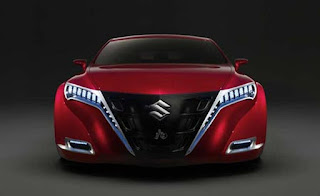In 1909, Michio Suzuki (1887–1982) established the Suzuki Loom Works in the little seacoast town of Hamamatsu, Japan. Business blasted as Suzuki manufactured weaving looms for Japan's goliath silk industry. In 1929, Michio Suzuki concocted another sort of weaving machine, which was sent out abroad. The organization's initial 30 years concentrated on the improvement and creation of these machines.
Regardless of the accomplishment of his weaving machines, trusted that his organization would profit by enhancement and he started to take a gander at different items. In view of shopper interest, he chose that building a little auto would be the most useful new pursuit. The venture started in 1937, and inside two years Suzuki had finished a few minimal model autos. These first Suzuki engine vehicles were controlled by a then-imaginative, fluid cooled, four-stroke, four-chamber motor. It had a thrown aluminum crankcase and gearbox and produced 13 torque (9.7 kW) from a relocation of under 800cc.[citation needed]
With the onset of World War II, generation anticipates Suzuki's new vehicles were stopped when the legislature pronounced non military personnel traveler autos a "superfluous product." At the finish of the war, Suzuki did a reversal to creating looms. Loom creation was given a support when the U.S. government affirmed the delivery of cotton to Japan. Suzuki's fortunes lit up as requests expanded from household material makers. Yet, the delight was fleeting as the cotton market broken down in 1951.
Confronted with this titanic test, Suzuki came back to the creation of engine vehicles. After the war, the Japanese had an awesome requirement for reasonable, dependable individual transportation. Various firms started offering "cut on" gas-fueled motors that could be joined to the run of the mill bike. Suzuki's initial two-wheeled vehicle was a bike fitted with an engine called, the "Force Free." Designed to be cheap and easy to fabricate and keep up, the 1952 Power Free had a 36 cc, one drive, two-stroke engine. The new twofold sprocket gear framework empowered the rider to either pedal with the motor helping, pedal without motor help, or essentially separate the pedals and keep running on motor force alone. The patent office of the new just government allowed Suzuki a money related sponsorship to proceed with exploration in cruiser building.
1955 Suzulight
By 1954, Suzuki was delivering 6,000 cruisers for each month and had authoritatively changed its name to Suzuki Motor Co., Ltd. Taking after the accomplishment of its first cruisers, Suzuki made a significantly more fruitful car: the 1955 Suzuki Suzulight. The Suzulight sold with front-wheel drive, four-wheel free suspension and rack-and-pinion directing, which were not basic on autos until three decades later.
Volkswagen held a 19.9% non-controlling shareholding in Suzuki somewhere around 2009 and 2015. A universal assertion court requested Volkswagen to offer the stake back to Suzuki. Suzuki paid $3.8bn to finish the stock purchase back in September 2015.
Leadership
The organization was established by Michio Suzuki; its present Chairman and CEO is Osamu Suzuki, the fourth embraced child in-law in succession to run the company,
The Suzuki Loom Company began in 1909 as a maker of weaving machines weaving silk and cotton. Michio Suzuki was resolved to improving, more easy to understand looms and, for a long time his emphasis was on the improvement of these machines. Michio's yearning to broaden into car items was hindered by World War II.Before it started assembling four-stroke motors, Suzuki Motor Corp. was known for its two-stroke motors (for cruisers and autos). After the war, Suzuki made a two-stroke mechanized bike, yet in the end the organization would be known for Hayabusa and GSX-R bikes, for the QuadRunner, and for overwhelming courses far and wide. Indeed, even in the wake of delivering its first auto in 1955 the organization didn't have a vehicles division until 1961.Today Suzuki is among the world's biggest automakers, and a noteworthy brand name in vital markets, including Japan and India, however didn't really offers autos in North America.

















0 comments:
Post a Comment